Pat Letendre interviews our TM colleagues - past & present:
It's my pleasure, indeed an honour, to write a series of blogs for CSTM to celebrate the careers of transfusion professionals who came before and made a difference. Some names you may recognize, some you may not. But rest assured they all made a difference and we are the better for it.
Each blog begins with a brief background on the person's career, followed by musings on their career and my comments throughout. Although all participants enjoyed their careers and love the transfusion profession, they speak honestly about both the ups and downs. Perhaps their reflections will resonate with your experiences.
I will remember you: Ana Lima
This blog features Ana Lima, RN, a Transfusion Safety Officer (TSO) at
Sunnybrook Health Sciences Centre in Toronto, ON, Canada. I knew Ana because she subscribed and contributed to Canada's TSO mailing list and, of course, by reputation, but did not know her personally. She recently retired, which gave me an opportunity to ask if she would consider a CSTM blog about her career in the 'I will remember you' series. After considering the request she said yes, for which I and CSTM are grateful.
Ana's is the 9th transfusion professional in the series and has the distinction of being the first nurse. In a way, it's natural that earlier blogs featured medical laboratory technologists since that is my background too. Face it, I knew the earlier subjects and could leverage our relationship to convince them to do the blog. In Ana's case I had the advantage of convincing her that we really needed a blog on a nurse as transfusion nurses play key roles in transfusion safety worldwide.
After having discussed her career by e-mail I've gotten to know Ana better. These qualities stand out to me. First, she is very efficient, answering all questions directly. Second, she's a good writer requiring no editing. Third, she presents realities frankly as she sees them. Fourth, Ana has a great sense of humour and it happens to align with mine. I hope some of these characteristics shine through in Ana's musings below.
BACKGROUND
Before you can appreciate how Ana made a difference and understand her musings, you should know some of her experiences. I encourage you to consider your career compared to hers and how you may muse on transfusion medicine.
One things I knew about Ana from the TSO mailing list 'transfusion' was that she was generous in sharing with colleagues. Between 2002 and 2017, Ana contributed 64 replies to the list. For those readers beyond Canada, many of you know about
ORBCoN's Bloody Easy resources (originally developed at Sunnybrook). The Bloody Easy 'Blood Administration' handbooks and 'Bloody Easy for Nurses eLearning module' were both developed by Ana Lima.
For a few of Ana's many contributions to Canada's transfusion community and beyond, see a
short resumé.
ANA'S MUSINGS
Becoming a TSO
As you can see from the resumé, I had a bit of a bloody history before I ended up becoming the first (and only so far) transfusion safety nurse at Sunnybrook. And I got the TSO job basically because no one else applied. It was part-time so not many takers at the time but we had a young daughter (Alicia) so part-time suited me fine so I could spend more time with her.
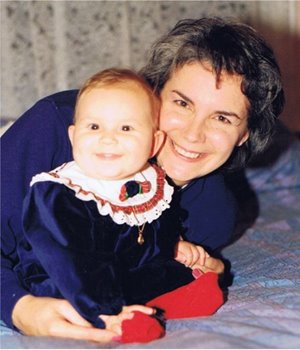 |
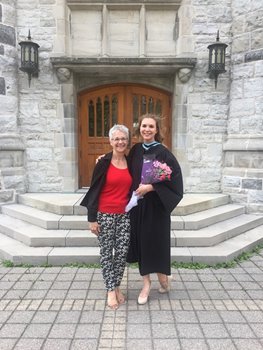 |
| Ana & Alicia, 1994 |
Alicia graduating from Queen's University, 2017 |
I had started at Sunnybrook 4 yrs before to set up the autologous stem cell program which we ran in the outpatient transfusion clinic. I was also still working part time at the Red Cross Apheresis department. Funny story, talk about vein-to-vein, there were several occasions where I had been the Red Cross nurse who collected an apheresis platelet from a donor and then a few days later there I was at Sunnybrook transfusing the very same platelet to a patient requiring an HLA-matched product – my handwriting was on the patient assignment tag!
Initially I was doing the TSO role but continued to do stem cell collections and infusions as well, but that didn’t last! And throughout the years it continued as a part-time job but really a full time one in part-time hours.... There was an attempt now with my retirement to increase it to a full time role, but the search for funding was unsuccessful, so my successor will continue in a part-time role.
This leaving part has been somewhat frustrating for me as the delay went on for so long (even though I gave more than enough notice) that the next person will not be starting until April - so much for succession planning! But they will be having me return for a few training sessions focusing on the things I did that no one else knows enough about to teach.
That is a problem for all in this role – how do you learn to be a TSO? When I started, the TSO program in Quebec had recently been established. And they initially received extensive training, all of which was videotaped but all in French! However, I grew up in Montreal and my French is pretty good so I was able to visit a few TSOs there and shadow them for a few days. Anna Urbanek, Anne Wilson, Yvan Rousseau, and Bonnie Selcer were invaluable in my early days. And I convinced Yvan to let me borrow the VHS tapes and photocopy all the binders (I had to beg), which I then had to mail back to him. Then I sat and watched hours and hours of French instruction. And read everything I could get me hands on....
Challenges
The TSO role intersects with so many other professions that sometimes I feel like I am the only one who really knows what I do – the complete picture, not just investigating reactions and doing teaching sessions and audits of practice. The day to day questions from nurses, physicians and technologists who are involved in various aspects of transfusing patients, only the individuals involved know of that. Answering questions about unusual situations, following up on errors or near misses to improve practice, this is hard work for one person part-time. Serving on committees to help ensure transfusion safety. To name a few committees:
- Transfusion;
- IV pump selection;
- Massive Transfusion (a lot of work because we changed a significant amount of our existing policy and then created short eLearning modules for each profession. I did the Nursing one including the voiceover);
- Forms;
- ePPID project team (see 'Things that gave me the most pleasure' below);
- Consent policy.
And now as a new person enters this role at my hospital, there will be challenges getting the expertise without the support of someone who has done the role. Liaising with other TSOs, maybe shadowing them as I did, will be important. Maybe someday we will have a formal TSO training program, as Australia does, and TSO positions in all hospitals of a certain size supported at least financially by provincial blood offices. What a great way to improve transfusion safety!
What I learned and contributed
I think because of the early support I received, I have always felt that it was important to give back and share with others – not only to improve practice based on best evidence but also to ensure some consistency especially for residents moving from one institution to another. This is also why I became involved with developing resources, first for ORBCoN and later TTISS-Ontario as the Chair of the Education Committee and had my name on the Resource List for TSO members.
I believe Sunnybrook has one of the best Blood (and Tissue) Banks in Canada, if not the world, and it is the people that make it so because of their dedication and expertise in their field. As a nurse entering this role I had extensive experience in both donor and patient apheresis, transfusion and neonatal ICU, so was quite comfortable with the clinical bedside practice. But I had to rely heavily on my colleagues in transfusion medicine to share their expertise when it came to learning blood banking 101.
Ana and friends hanging loose at CSTM–Edmonton, 2013
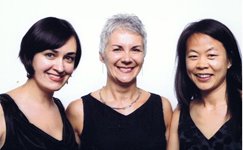
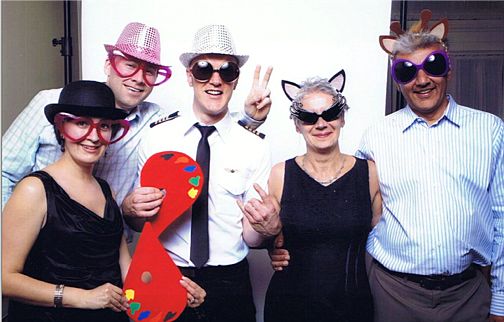
Stem cell apheresis, 1997 After f
irst stem cell infusion, 1997
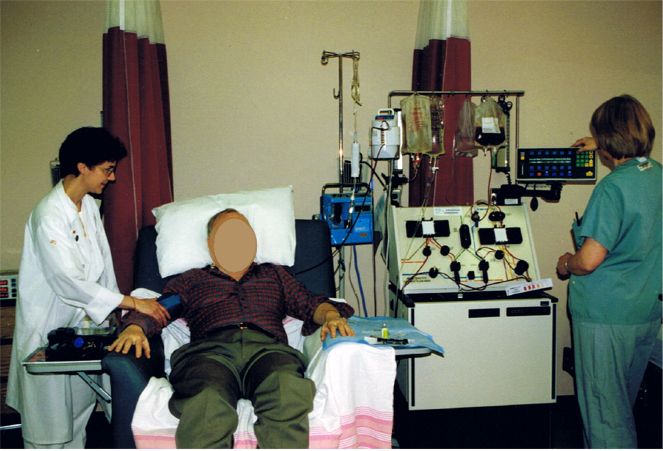
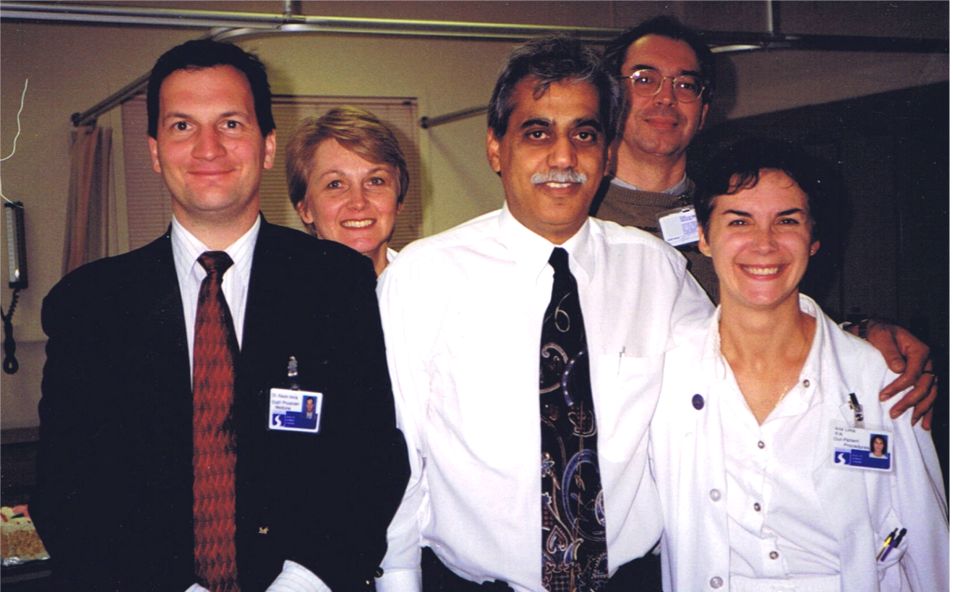
Over time it became a two way street as they learned quite a lot from me as well about what it’s like ’out there’. And, as it was usually me who they called upon to draw blood from them, (I’m a pretty good phlebotomist), they were always very willing to help me out when needed – fear of pain I think. <grin> Seriously though, we have always worked so well together it’s hard to believe. And they know the value of having a TSO to promote best practice and transfusion safety at the bedside.
I can name some of the folks who have most influenced me over the years in this role:
- Dr. Peter Pinkerton for his vision in knowing that the future of blood banking needed to move outside the walls of the Blood Bank
- Ahmed Coovadia for his quiet but invaluable leadership (I still need to find his volume button)
- Connie Colavecchia and Lisa Merkley and all the MLTs who, day in and day out, answered all my sometimes ‘silly’ questions
- Dr. Jeannie Callum and Dr. Yulia Lin – I mean how lucky can a TSO get!
- And all my TSO friends across Canada who reach out to me and I to them.
Regrets
I should have gotten my BSc in Nursing in 1980. When I graduated with my Diploma, only those wanting to be managers got their degree and I wasn’t interested. And my Nursing career path has always been in niches where the expertise was more important than the degree. That still holds to this day, but it certainly opens more doors – although not necessarily making for a better employee.
Things that gave me the most pleasure
- Succeeding in elevating the status of transfusion to the powers that be within the hospital to get approval to make ‘Transfusion’ an Advanced Nursing Competency at Sunnybrook. I believe we were the first in Canada to do so in 2006. And thus we complied with the upcoming regulations and standards requiring ongoing education for those transfusing patients.
- Teaching almost every single nurse who was hired at Sunnybrook over the last 18 years how to transfuse safely.
- Developing the first ever eLearning module at Sunnybrook and later using its basic content to develop one for ORBCoN as well.
- Creating the Blood & Tissue Bank Intranet page, which initially had only contact phone numbers and now has a plethora of monographs for clinicians, patient pamphlets, guidelines for different scenarios, instructions, policies and procedures...and sharing these over the years.
- Supporting and now finally expanding ePPID (electronic Positive Patient Identification – my acronym BTW!) across Sunnybrook for checking blood prior to transfusion and labelling of all samples. For 14 years I was trainer, IT, Biomed, Help desk for this ‘pilot’ project that now finally has the proper support and backing that it deserves:
Sunnybrook's first in Canada barcoding system helps reduce hospital errors (2:05 video featuring Dr. Jeannie Callum)
As you can see, Ana has contributed much to transfusion safety in Canada and around the globe. In the spirit of sharing, she offered one more resource to CSTM readers with these words:
'For interest and more information about my role at Sunnybrook I have attached one of two presentations I gave in Hong Kong. Being in Hong Kong gave me a good perspective on how much we have accomplished in Canada in regards to transfusion safety in many aspects – transfusion safety for sure, but also blood conservation and research to establish evidence based practice. We have come a long way and it made me realize that we have become leaders in the world that others look to as an example to emulate.'
Ana & spouse Jeff cruising in the Caribbean
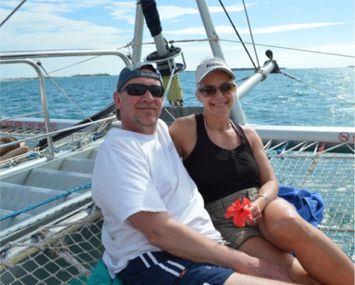
Ana in Hong Kong Dec. 2017 where she spoke at a conference on
The Evolving Role of Nurses in Transfusion
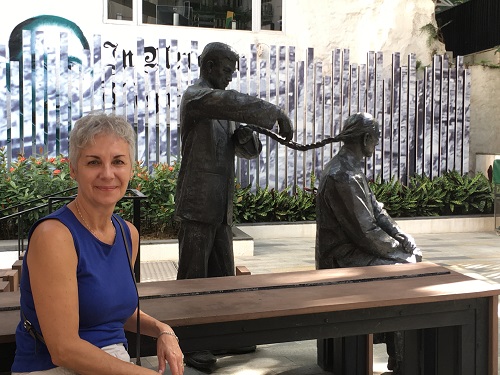
Because I did not know Ana personally, I asked a few of her colleagues if they would contribute to the blog. They add much to understanding her role in Canada's blood transfusion system.
For those who may not know the contributors: Julie diTomasso was the longtime TSO at the Hamilton Regional Laboratory Medicine Program and the 2004 recipient of the CSTM's Buchanan Award; Ahmed Coovadia was the subject of an earlier CSTM blog in this series (Part One and Part Two); and Dr. Jeannie Callum is one of Canada's most accomplished hematopathologists (see hits in Google search).
Julie diTomasso:
I met Ana when we both were pioneers in the new Transfusion Safety Officer role in Ontario. Ana was always the determined passionate innovator emphasizing the nursing perspective. She overcame the silo of the laboratory environment to become a respected and important member of the Blood Bank team.
Her passion was contagious and she was always extremely thorough with feedback and suggestions.It was a pleasure to work with her.
Cheers to Ana and welcome to the retirement club. Enjoy.
Ahmed Coovadia:
My initial contact with Ana was during her tenure at Canadian Blood Services (formerly Canadian Red Cross BTS). I was delighted when Ana accepted her role at Transfusion Services at Sunnybrook, because this clearly filled a long overdue void at our institution.
This journey provided our institution to finally close the 'gap' in enhancing and improving patient care. The collaborative journey of Ana's expertise and dedication, Jeannie Callum's pursuit of excellence, and the existing technical staff, helped propel our group to increase and maintain our desire to improve patient care.
Ana brought insights into challenges facing the nursing staff and coordinated greater collaboration with the technical staff. Her dedication and understanding of the blood system paved the way for greater educational initiatives for all.
Ana's greatest gift to all was her ability to bring forth educational material (in collaboration with the Ontario Regional Blood Coordinating Office) that not only benefited the institution but did and continues to assist others provincially, nationally and Internationally. Ana will be dearly missed for her continued challenges around the 'table' and her unique sense of understanding.
Dr. Jeannie Callum:
In 2000, Sunnybrook Health Sciences Centre made the noteworthy decision to fund one of the first transfusion safety nurse positions in Canada. In the fall of 2000, I cornered Ana Lima in the hallway and begged her to consider applying for the position. To me it seemed as though she had spent her entire nursing career in preparation for the position: neonatal intensive care nurse (in Montreal and then Toronto), acquisition of French language skills in Montreal (allowed her to educate all nurses in Canada), Canadian Red Cross nurse (whole blood and autologous), Canadian Red Cross apheresis nurse (platelets, plasma, and white cells), apheresis nurse at University Health Network (pediatric and adult), and Sunnybrook apheresis and transfusion nurse. She eventually gave way after considerable pressure and agreed to take the position. I don’t think she would ever say she regretted the decision.
From that point on she not only developed and implemented state-of-the-art policies and procedures at Sunnybrook, but also developed generic versions for the Ontario Regional Blood Coordinating Network so all hospitals across Ontario (and Canada) could improve the safety of transfusion. For example, Ana
- Developed in person and on line training material for nurses and physicians for indications for transfusion and management of adverse reactions.
- Was the lead on “beba” – bloody easy blood administration handbook.
- Assisted with the development of the bloody easy handbook.
- Developed elearning for massive hemorrhage protocol training for all staff members at Sunnybrook.
- Was instrumental in developing the first version and subsequent versions of TTISS.
- Developed a comprehensive set of patient pamphlets.
- Developed the first SOP for auditing transfusion live with a “mark” given for all audited transfusions.
And because of her efforts most audits at Sunnybrook now score 100% on compliance with hospital policies (she thinks it’s the free pens she gives out to the nurses!). She has spoken locally, Provincially, Nationally, and internationally about transfusion. She has spoken at AABB through their audioconference program reaching 100s of listeners.
She is a supportive, kind, smart, and hardworking individual. I still have chest pain since she left last month. I have no doubt that her efforts in Canada have made this country a safer place to have a blood transfusion.
Comments are most welcome. Please add to the record of what it was (or is) like to work as a transfusion professional in Canada.